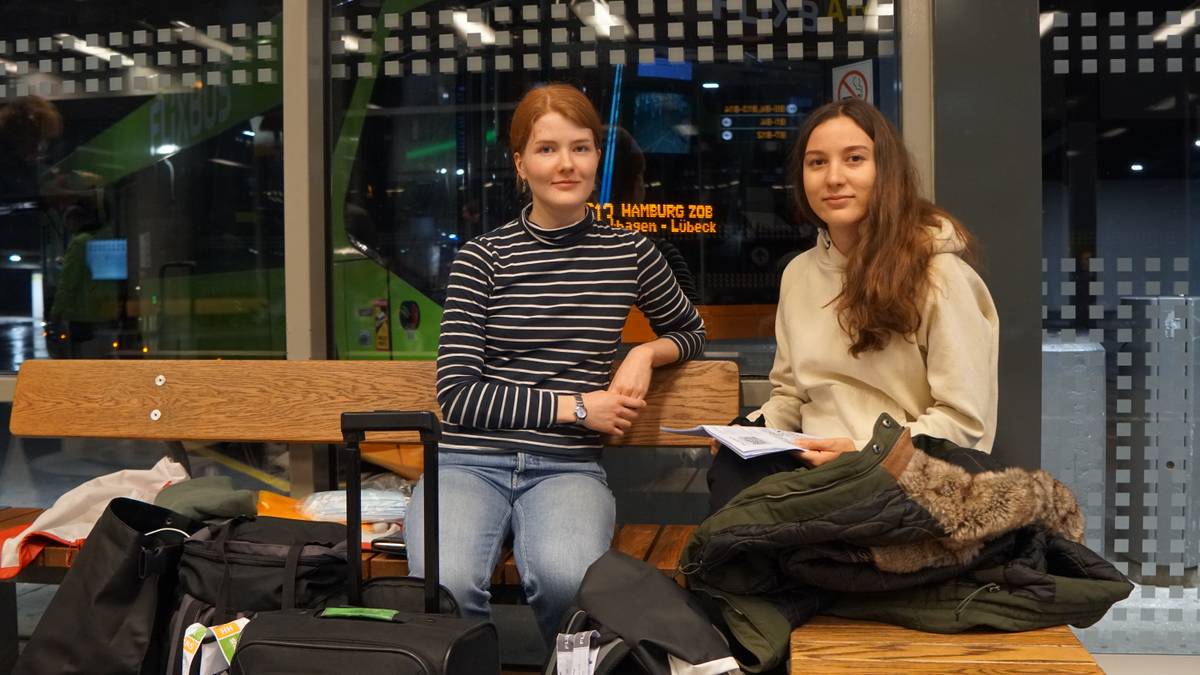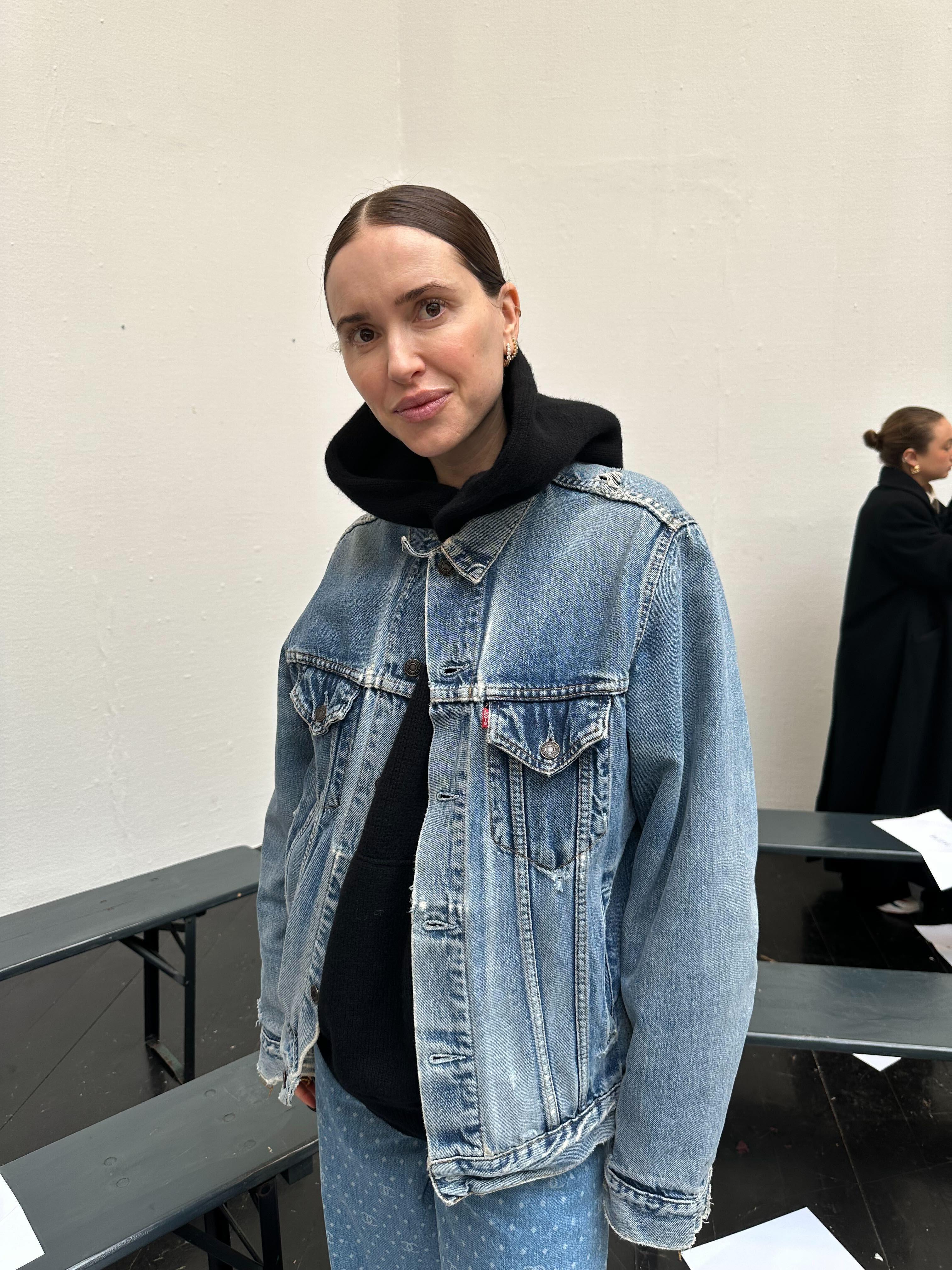Travel 55 hours by train and bus to influence the climate – NRK Norway – Overview of news from different parts of the country
On Sunday, the world’s spotlight will be on Glasgow and COP26, also known as the climate summit. In the list of participants you will find names like Joe Biden, Boris Johnson and Angela Merkel. In the list of participants, you will find far less visible people.
Miriam Akkouche (26) and Pauline Tomren (22).
Miriam sits on the city council for MDG in Bergen, while Pauline is the county council representative for MDG in Vestland. A few months ago, it was decided that they should attend the summit as delegates from Green Youth.
They saw it as an opportunity to travel climate-friendly.
Travel time: 55 hours.
The journey started by train from Bergen to Oslo on Friday. Then wait tens of hours in the bus. Engaging local politicians has a goal of influencing world leaders to save the planet from the climate crisis.
But not until Sunday. Only then is the environmentally friendly journey over.
After 15 hours on the first bus that goes from Oslo to Hamburg, there is a night in the streets of Hamburg waiting for the next bus.
Photo: Torgeir Knutsen
– I do not think that we alone should make so many changes, but all of us thousand activists can push politicians in the right direction. It is a journey to get there, where we will influence the world leaders to take climate action, says Tomren.
Heavy travel
– You two are clearly engaged in the climate. Do you expect people to travel the way you do?
– Absolutely not. The journey shows how heavy it is to travel environmentally friendly. It gives an idea of how much you have to do to actually travel climate-friendly. It is not nice that people choose planes when it is so impractical and and so long to travel across national borders, the woman says.

The women tell NRK that they expect to sleep on the bus
Photo: Private
Tomren and Akkouche have been active in politics for a long time. Both will take the long journey because they fear the consequences if there is not enough handling.
– There is often talk about numbers and who should cut how much, but then we forget why, and the people it affects. It’s about people, says Tomren.
– Not just for top politicians
Rasmus Gjedssø Bertelsen is a social scientist and expert on climate change and the Arctic at UiT Norway’s Arctic University.
He has previously been an observer and organizer of events at the climate summit in Copenhagen and Paris. The climate summit consists of far more than the politicians we read about.
– What is important for people to know is that civil society participates to a large extent. It’s not just top politicians. You can look at it as two different races. One race is state leaders to be handled. The second race is the meetings between countless other actors in society. It is very valuable for creating climate solutions on the hill.
By the hill, he means solutions at a lower level. For example, it may be business people, representatives of city people, leaders and interest groups who find solutions.

Rasmus Gjedssø Bertelsen at UiT says that the meeting is far more than top politicians.
Photo: Michael Moreau
– You can see it as a conference with a huge level of activity. There are seminars and stands, but not the way we know where brochures and free stuff are handed out. It is networking and a meeting place to exchange knowledge and solutions, says Bertelsen.
Will be being listened to
The two women on the bus believe that the meeting will give them a chance to get in touch with the top politicians.
– We want us to meet the Norwegian politicians. Maybe you can talk a little and we can come up with the input. We have a desire for them to listen to us and take it seriously. Thousands of activists around the world are participating, so it will be exciting, says Akkouche.
– What are your expectations for the meeting?
– It is always allowed to hope, but to be honest. Then we have low expectations. There are few countries that have come up with an ambitious goal of good enough emission cuts, says Tomren.
Big cities find solutions
Bertelsen at UiT believes that it is not the top politicians who are most active at the summit. he highlights networking as the most essential. Big cities in particular are an important player.
– Large metropolises have relevant questions and answers to climate solutions around transport, energy, infrastructure and water. They participate extensively. At the summit, they can share technology, experiences and policies. They also compete against each other on quality of life.
The researcher believes that Denmark has done an excellent job of influencing the climate summit. A Danish artist transported large blocks of ice from Greenland to Paris to show how the melting of the Greenland ice sheet was going on.

The ice blocks in Paris 2015 slowly but surely melted away.
Photo: Jacques Brinon / AP
Meet after extreme weather and energy crisis
The UN summit is nearing the end of a year with a series of dramatic events such as heightened awareness of global warming. The USA, Canada, Germany, Greece, China and several other countries were hit this summer by extreme weather which was linked to climate change.
The UN Panel on Climate Change presented a new, gloomy report, which was described by UN Secretary-General António Guterres as “code red for humanity”.
Energy crisis, geopolitical tension, pandemic and overcrowded hotels can create challenges at climate meetings in Glasgow.
The desire for increased efforts against climate change has been great in the aftermath of the floods, heat waves and forest fires that hit a number of countries this summer.
The US broadcast of John Kerry has called the Glasgow summit “the best hope” for avoiding the worst consequences of climate change.




